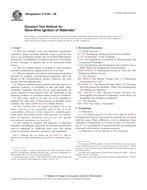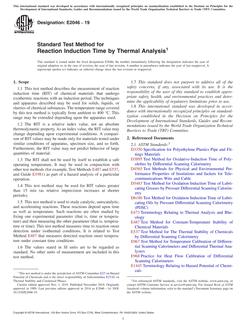1.1 This practice covers how to obtain soil samples using hollow-stem sampling systems and use of hollow-stem auger drilling methods for geotechnical exploration. This practice addresses how to obtain soil samples suitable for engineering properties testing.
1.2 In most geotechnical explorations, hollow-stem auger drilling is combined with other sampling methods. Split barrel penetration tests (Test Method D 1586) are often performed to provide estimates of engineering properties of soils. Thin-wall tube (Practice D 1587) and ring-lined barrel samples (Practice D 3550) are also frequently taken. This practice discusses hole preparation for these sampling events. For information on the sampling process, consult the related standards. Other in situ tests, such as the vane shear Test Method D 2573, can be performed below the base of the boring by access through the drill string.
1.3 This practice does not include considerations for geoenvironmental site characterizations and installation of monitoring wells which are addressed in Guide D 5784.
1.4 This practice may not reflect all aspects of operations. It offers guidance on current practice but does not recommend a specific course of action. It should not be used as the sole criterion or basis of comparison, and does not replace or relieve professional judgment.
1.5 The values stated in inch-pound units are to be regarded as standard. The values given in parentheses are mathematical conversions to SI units that are provided for information only and are not considered standard.
1.6 Hollow-stem auger drilling for geotechnical exploration often involves safety planning, administration, and documentation. This standard does not purport to specifically address exploration and site safety. It is the responsibility of the user of this standard to establish appropriate safety and health practices and determine the applicability of regulatory limitations prior to its use. Performance of the test usually involves use of a drill rig, therefore, safety requirements as outlined in applicable safety standards, for example OSHA (Occupational Health and Safety Administration) regulations, DCDMA safety manual (1), drilling safety manuals, and other applicable state and local regulations must be observed.
Product Details
- Published:
- 10/01/2008
- Number of Pages:
- 14
- File Size:
- 1 file , 250 KB
- Redline File Size:
- 2 files , 480 KB


